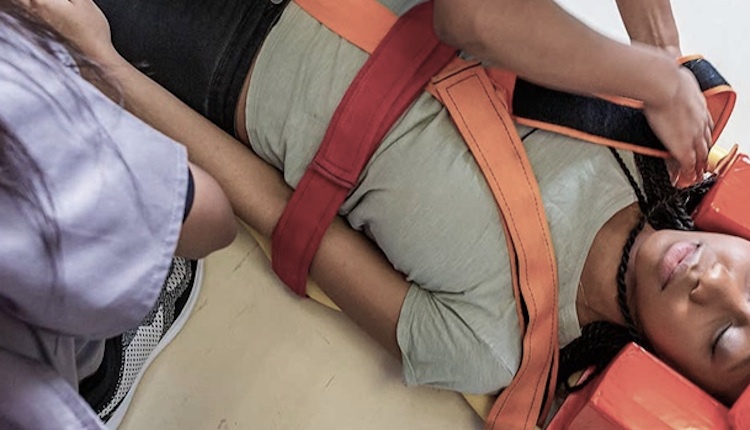
Prehospital spine immobilization in penetrating injuries: yes or no? What do studies say?
Spine immobilization is a widely used method to transport trauma patients to hospitals worldwide. Plus, spineboards and cervical collars are very important devices in different rescue scenarios. However, in the case of penetrating injuries, what do reviews say?
Before speaking of eventual problems in patients immobilization, we must bear in mind that prehospital spine immobilization devices, like spineboards and cervical collars, are essential in many different scenarios. Trauma patients are saved thanks to immobilization devices all over the world today. The issue of prehospital immobilization arrives when we have to deal with penetrating injuries.
Patient prehospital spine immobilization in penetrating injuries, new clinical, what do different studies report?
One of the first evidence arrived in 2010 when John Hopkins Medicine issued a paper on prehospital spine immobilization on gunshot and stab victims (link to the official study at the end of the article). The opinion was that in such patients, immobilization should not be carried out, especially with a cervical collar while it, in case of gunshots or stabbing, could make more difficult the patient to breath.
However, the evidence is low and the scientific community is still questioning on this matter. A very interesting paper has been issued by the Eastern Association for the Surgery of Trauma (EAST). In this publication, EAST conducted a systematic review meta-analysis to construct recommendations on the prehospital spine immobilization.
Review indication on prehospital spine immobilization in penetrating injuries
The Eastern Association for the Surgery of Trauma wanted to evaluate whether nonoperative spine immobilization of any type is beneficial or harmful in penetrating trauma, like gunshots or stabbings. Questions that the experts asked:
- does spine immobilization versus no spine immobilization decrease mortality in adult penetrating trauma patients?
- does spine immobilization versus no spine immobilization decrease the incidence of neurologic deficit or the incidence of a potentially reversible deficit?
In order to carry out this review, the EAST realized both quantitative and qualitative analysis. As there are no studies that highlight the benefit of spine immobilization in mortality and neurologic injury, even for patients with a direct neck injury, they can presume that spine immobilization in penetrating injuries may not be the good solution. For more details, at the end of the article, within the sources list, you will find the official tables edited by the EAST.
Statistically, there is no significant difference between spine immobilization and no immobilization, although the point estimate was in favour of no immobilization in penetrating injuries. The across-study variability was quite significant for the unpooled studies, that’s why there is a gap in meeting statistical significance.
If there is no sure evidence, how can we consider prehospital spine immobilization in penetrating injuries?
Some reviews highlighted mortality as an association with spine immobilization, however, EAST highlighted that sometimes deaths can be suggested by the seriousness of wounds. On the other hand, immobilization, in some cases of penetrating injuries can obscure wounds that would have to be treated or, at least, identified in order to guarantee the correct life-saving procedures.
Another topic that further complicates this matter and adds doubts to the prehospital immobilization filed, is that only a few studies specify the devices to use to provide immobilization. And this makes every assumption not much clear. As said at the beginning of the article, immobilization devices are important and essential in many emergency medical fields, like SAR, for example. Although, the EAST review analyzed in this article would like to spread the idea of correctly evaluate the condition of the patient.
There really are cases in which immobilization has to be performed and others not, and this must be the key point on which paramedics and medical associations should focus. Some studies can help, but we must bear in mind that the life of the patient must be at the center of our assumptions.
READ ALSO
10 Steps to perform a Correct Spinal Immobilization of a Trauma Patient
Blood transfusion in trauma scenes: How it works in Ireland
What to do with trauma in pregnancy – A brief list of steps
SOURCES
Eastern Association for the Surgery of Trauma (EAST): the official website and “Prehospital spine immobilization/spinal motion restriction in penetrating trauma: A practice management guideline” with tables and references.



